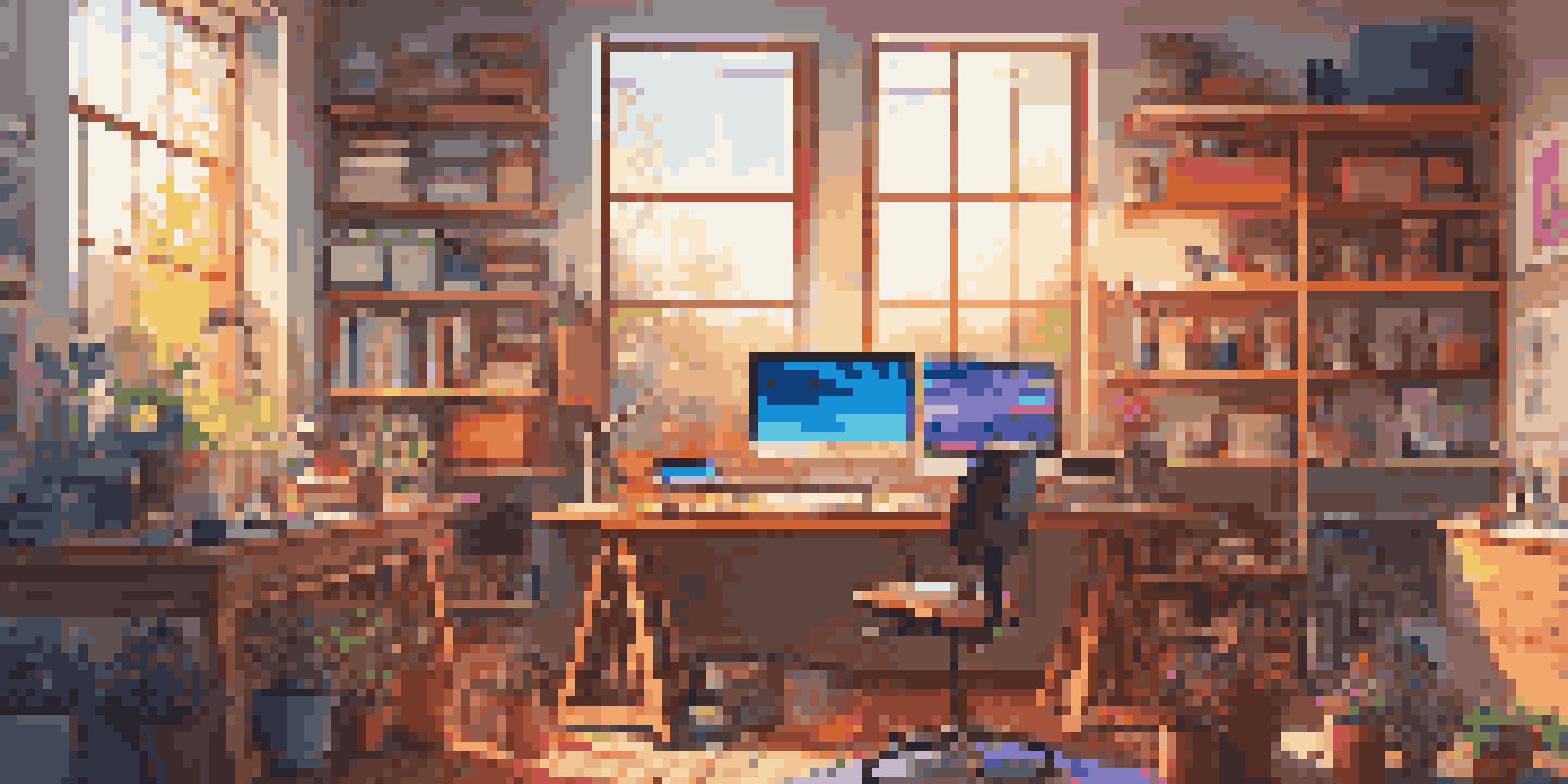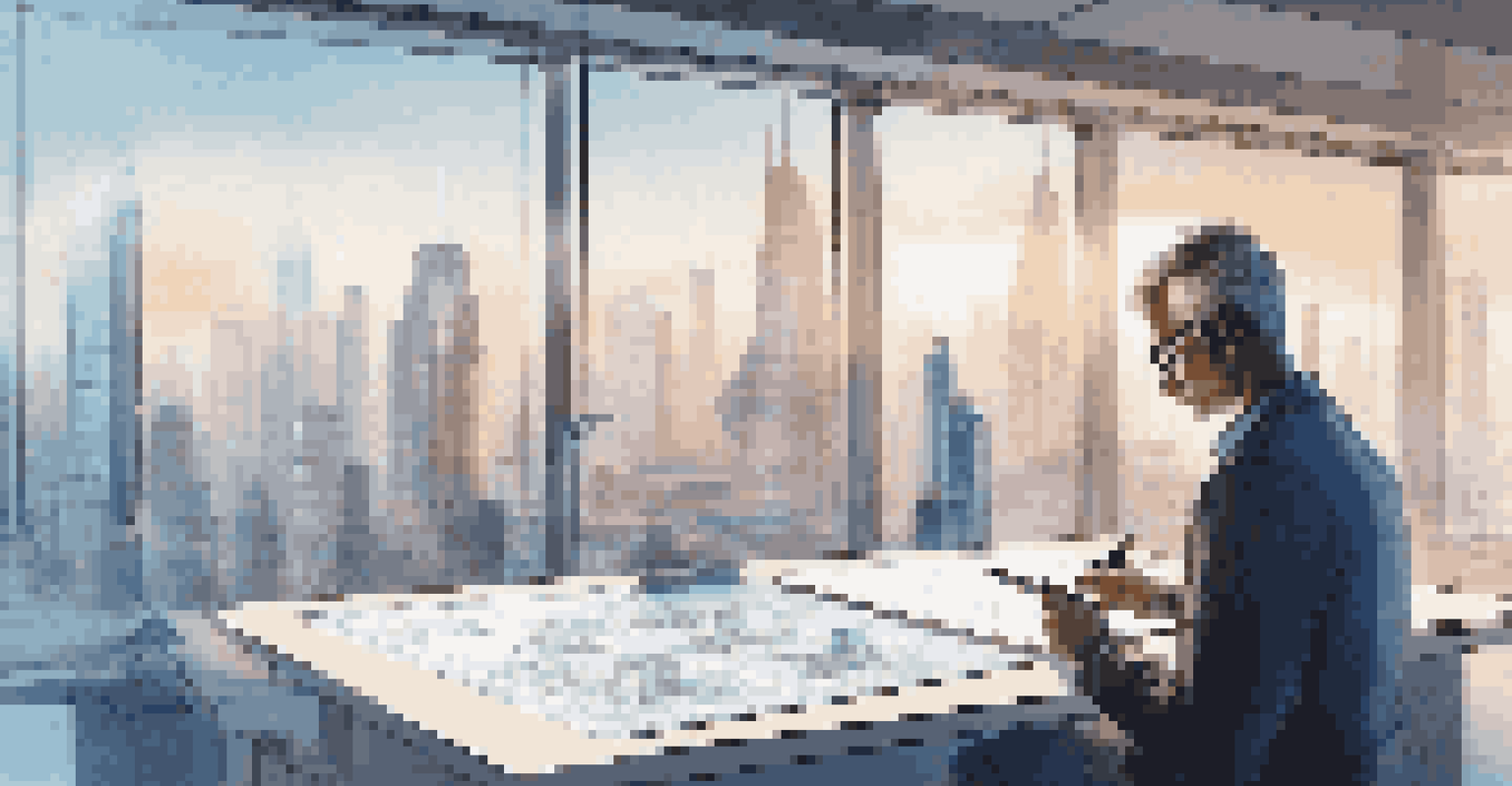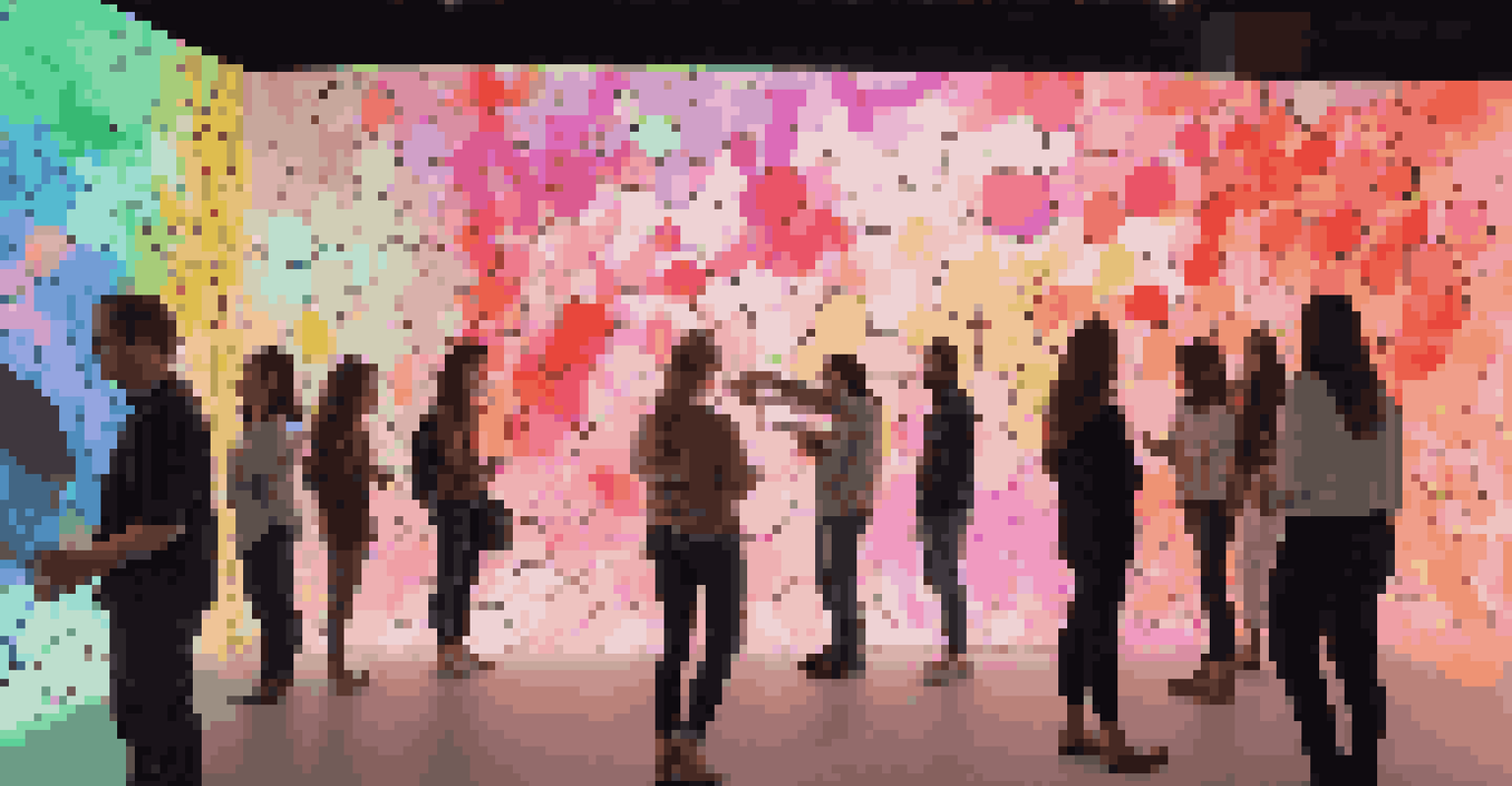The Impact of Technology on Art and Architectural Design

The Evolution of Artistic Tools Through Technology
In the past, artists relied heavily on traditional tools like brushes and chisels. However, with the advent of digital tools, such as graphic design software and 3D printing, the creative landscape has transformed dramatically. These technologies enable artists to experiment with new forms and styles, pushing the boundaries of what art can be. For instance, digital painting applications allow for undo options and layering, offering a freedom that traditional media often cannot.
Technology is best when it brings people together.
Moreover, the accessibility of these tools means that aspiring artists from all walks of life can express their creativity without the need for expensive materials. This democratization of art tools has led to a surge in diverse voices and perspectives within the art community. As a result, we see a richer tapestry of artistic expression that reflects a broader range of experiences and cultures.
Ultimately, technology has not only changed the tools artists use but has also redefined the very nature of artistic creation itself. Artists are now able to collaborate across distances, sharing their work in real-time, which fosters innovation and creativity. This evolution highlights how technology serves as a bridge between traditional art forms and the limitless possibilities of digital expression.
Architectural Design: From Sketch to Digital Models
Architectural design has always been about envisioning spaces, but technology has revolutionized how these visions come to life. With tools like Building Information Modeling (BIM) and computer-aided design (CAD), architects can create detailed 3D models that allow for intricate planning and visualization. This shift means that what once required extensive physical models can now be done digitally, saving time and resources.

Additionally, these digital tools enable architects to analyze and simulate various aspects of their designs, such as energy efficiency and structural integrity. This capability leads to smarter, more sustainable buildings that can adapt to their environments. For instance, architects can use simulations to assess how sunlight interacts with a structure over time, optimizing natural light usage and reducing energy consumption.
Technology Transforms Artistic Tools
Digital advancements have broadened access to artistic tools, allowing diverse voices to flourish in the creative landscape.
As technology continues to advance, the architectural process will likely become even more integrated with virtual and augmented reality. Imagine walking through a building before it’s even constructed! Such immersive experiences will not only enhance client satisfaction but will also allow for more collaborative design processes, where feedback can be gathered and implemented in real-time.
The Rise of Interactive and Immersive Art Experiences
Technology has opened the door to interactive art experiences that engage viewers in unprecedented ways. Artists are increasingly using virtual reality (VR) and augmented reality (AR) to create immersive environments that invite participation. For example, installations where viewers can manipulate elements of the artwork or even become part of the piece themselves blur the lines between artist and audience.
Art is the most beautiful of all lies; it is the most beautiful of all truths.
These interactive experiences can evoke deeper emotional connections, making the art more memorable and impactful. Consider an art exhibit where visitors can don VR headsets to explore a fantastical world crafted by the artist, experiencing it from within rather than merely observing. This level of engagement can transform how we perceive and appreciate art.
Furthermore, interactive installations can be tailored to respond to audience input, creating a dynamic relationship between the artwork and its viewers. This technology-driven creativity fosters a sense of community and collaboration, as participants contribute to the evolving narrative of the art piece. In this way, technology not only enhances artistic expression but also enriches the audience's experience.
Art Preservation: Technology as a Guardian
Preserving art is crucial for cultural heritage, and technology plays a vital role in this endeavor. Advanced imaging techniques, such as infrared reflectography and multispectral imaging, allow conservators to analyze and restore artworks without damaging them. These methods reveal layers of history, such as underdrawings and previous restorations, which are often invisible to the naked eye.
Additionally, digital archiving has become an essential tool for preserving art collections. Museums and galleries now use high-resolution photography and 3D scanning to create digital replicas of artworks. This not only protects the originals from wear and tear but also makes art more accessible to the public through online platforms.
Sustainability Shapes Creative Practices
Both art and architecture are increasingly embracing sustainable methods, utilizing technology to minimize environmental impacts.
As climate change poses new challenges for physical preservation, technology offers innovative solutions for safeguarding artworks. For instance, environmental monitoring systems can track conditions like temperature and humidity, ensuring that artworks remain in optimal conditions. Thus, technology serves as both a protector and a promoter of our rich artistic heritage.
The Role of Social Media in Art and Architectural Exposure
Social media has become a powerful platform for artists and architects to showcase their work to a global audience. Platforms like Instagram and Pinterest allow creatives to share their portfolios instantly, reaching potential clients and fans without the barriers of traditional galleries. This exposure can lead to exciting opportunities, collaborations, and even sales directly through these channels.
Moreover, social media encourages community engagement, allowing artists to connect with their audience and receive immediate feedback. This interaction can inspire new ideas and directions for their work, fostering a collaborative spirit that was less prevalent before. For example, an artist might post a work-in-progress and then incorporate suggestions from followers into the final piece.
As a result, social media is not just a marketing tool; it has become a vital part of the artistic process. It empowers artists to build personal brands and cultivate relationships with supporters, ultimately shaping the future of how art is created and consumed. This shift illustrates how technology continually transforms the art world, making it more accessible and interconnected.
Sustainability in Art and Architecture through Technology
Sustainability is an increasingly important focus in both art and architectural design, and technology plays a key role in advancing these efforts. In architecture, software that analyzes the environmental impact of materials and designs helps architects make more sustainable choices. For instance, tools that simulate energy consumption can lead to designs that prioritize natural resources and reduce waste.
In the art world, sustainable practices are gaining ground, from using eco-friendly materials to employing techniques that minimize environmental impact. Artists are finding innovative ways to incorporate recycled materials into their work, creating pieces that speak to the importance of sustainability. This not only addresses environmental concerns but also raises awareness among audiences about the importance of conservation.
Future of Creativity is Collaborative
The integration of AI and smart technologies is set to redefine creativity and architectural design, promoting innovation and user interaction.
As technology continues to evolve, it will likely introduce even more sustainable solutions for both artists and architects. Innovations such as 3D printing with biodegradable materials and energy-efficient design software are just a few examples of how the creative industries can thrive while minimizing their ecological footprint. This harmonious blend of creativity and sustainability is paving the way for a more responsible future.
The Future of Art and Architecture in the Digital Age
As we look ahead, the future of art and architecture seems to be intertwined with technology more than ever. With advancements in artificial intelligence (AI), we can expect to see new forms of creativity emerge, where machines assist artists in generating ideas and designs. This collaboration could lead to groundbreaking works that challenge our understanding of authorship and creativity.
Additionally, the integration of smart technologies in architectural design promises to create more responsive buildings. Smart homes that adapt to their inhabitants’ needs or public spaces that use data to enhance user experience are just a glimpse of what's to come. This evolution will redefine how we interact with our built environments, making them more intuitive and user-friendly.

Ultimately, the intersection of technology, art, and architecture invites us to reimagine the possibilities of creative expression. As we embrace these changes, we can look forward to a future where art and design are not only reflections of society but also active participants in shaping it. This journey into the digital age holds great potential for innovation, collaboration, and inspiration across all creative fields.